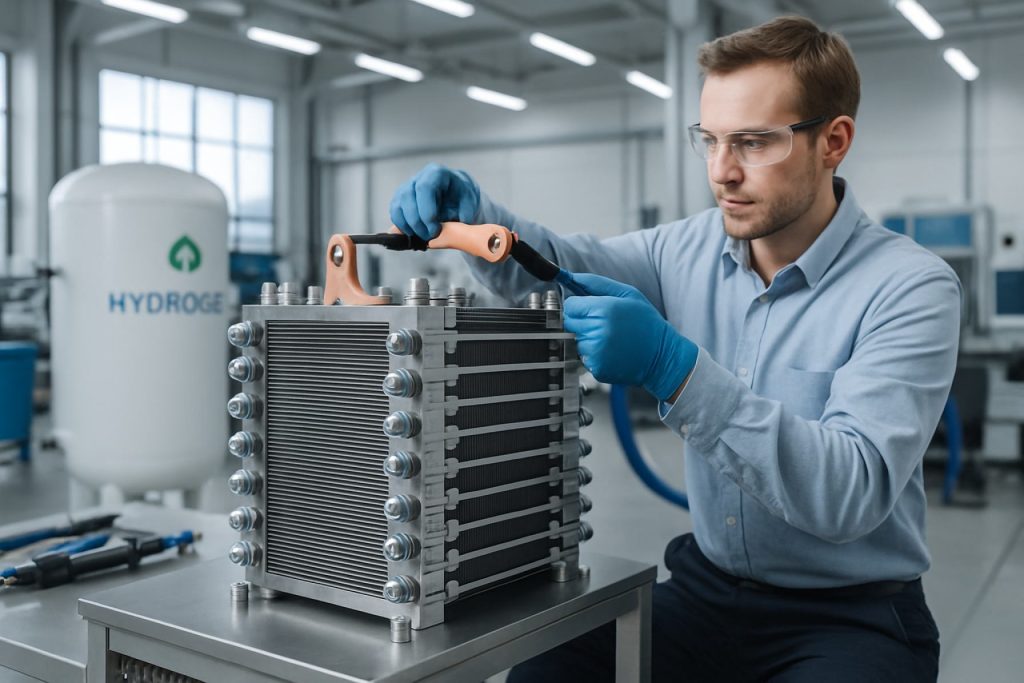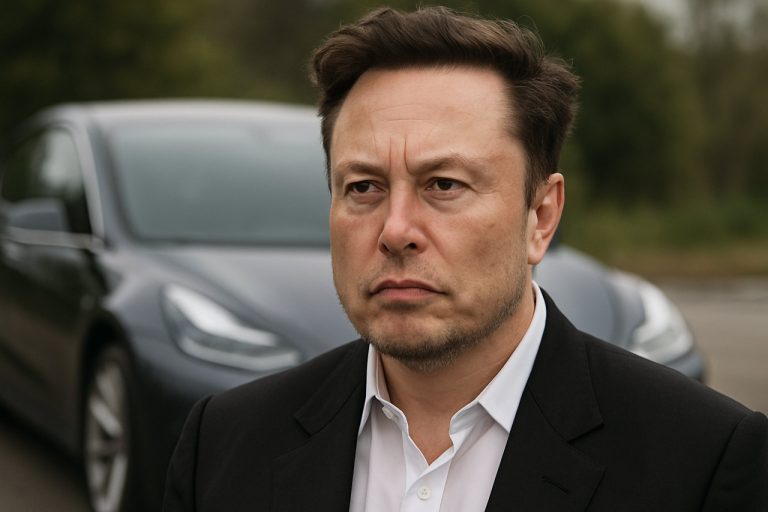
Electrolyser Stack Manufacturing for Green Hydrogen in 2025: Market Dynamics, Technology Innovations, and Growth Projections. This report delivers in-depth analysis of key trends, competitive strategies, and future opportunities shaping the industry.
- Executive Summary & Key Findings
- Market Overview: Size, Segmentation, and Demand Drivers
- Technology Trends in Electrolyser Stack Manufacturing
- Competitive Landscape: Leading Players and Market Shares
- Growth Forecasts 2025–2030: Market Value, Volume, and CAGR Analysis
- Regional Analysis: Key Markets and Emerging Regions
- Challenges and Opportunities in Electrolyser Stack Manufacturing
- Future Outlook: Strategic Recommendations and Industry Roadmap
- Sources & References
Executive Summary & Key Findings
The global electrolyser stack manufacturing sector is poised for significant expansion in 2025, driven by surging demand for green hydrogen as a decarbonization vector across energy, industry, and mobility sectors. Electrolyser stacks—core components that facilitate water splitting into hydrogen and oxygen—are at the heart of this value chain, with manufacturing capacity and technological innovation emerging as critical competitive differentiators.
In 2025, the electrolyser market is expected to witness a sharp increase in installed capacity, with projections indicating global shipments could exceed 10 GW, up from approximately 3 GW in 2023. This growth is underpinned by ambitious government targets, such as the European Union’s 10 million tonnes of domestic green hydrogen production by 2030, and substantial policy support in the United States through the Inflation Reduction Act and related incentives European Commission, U.S. Department of Energy.
Key findings for 2025 include:
- Rapid Scale-Up: Leading manufacturers such as Nel Hydrogen, Siemens Energy, and thyssenkrupp nucera are expanding gigawatt-scale production lines, with several new facilities coming online in Europe, North America, and Asia.
- Technology Diversification: Alkaline and Proton Exchange Membrane (PEM) technologies dominate, but Solid Oxide Electrolysers (SOEC) are gaining traction for industrial applications, with companies like Bloom Energy advancing commercialization.
- Cost Reduction: Stack manufacturing costs are projected to decline by 20–30% year-on-year, driven by automation, economies of scale, and material innovations, according to BloombergNEF.
- Supply Chain Localization: Geopolitical tensions and the need for resilient supply chains are prompting regionalization of stack manufacturing, with local content requirements emerging in key markets.
- Strategic Partnerships: Collaborations between electrolyser OEMs, utilities, and industrial gas companies are accelerating deployment and integration into large-scale hydrogen projects.
Overall, 2025 marks a pivotal year for electrolyser stack manufacturing, with the sector transitioning from pilot-scale to mass production, setting the stage for green hydrogen to become a mainstream energy carrier by the end of the decade.
Market Overview: Size, Segmentation, and Demand Drivers
The global market for electrolyser stack manufacturing, a critical segment in the green hydrogen value chain, is experiencing rapid expansion as decarbonization efforts intensify across industries. Electrolyser stacks are the core components of electrolyser systems, enabling the conversion of water into hydrogen and oxygen using renewable electricity. In 2025, the market is characterized by robust growth, driven by ambitious government targets, increased investments, and technological advancements.
Market Size and Growth
According to projections by the International Energy Agency, global electrolyser manufacturing capacity is expected to surpass 60 GW per year by 2025, up from less than 10 GW in 2022. The electrolyser stack segment accounts for a significant share of this capacity, as stacks represent the most value-intensive and technologically complex part of the system. Market research from BloombergNEF estimates that the global electrolyser market could reach $28 billion in annual revenues by 2030, with stack manufacturing comprising approximately 40-50% of the total system cost.
Segmentation
- By Technology: The market is segmented into Alkaline, Proton Exchange Membrane (PEM), Solid Oxide, and Anion Exchange Membrane (AEM) electrolyser stacks. Alkaline and PEM stacks dominate in 2025, with PEM gaining market share due to its higher efficiency and suitability for variable renewable energy sources.
- By Geography: Europe leads in installed and planned electrolyser capacity, driven by the EU’s Green Deal and REPowerEU initiatives. China is rapidly scaling up domestic manufacturing, while the United States is accelerating investments under the Inflation Reduction Act.
- By End-Use: Key demand sectors include ammonia and methanol production, refining, steelmaking, and heavy transport. Industrial decarbonization and energy storage are primary demand drivers.
Demand Drivers
- Policy Support: Aggressive national hydrogen strategies and subsidies in the EU, China, and the US are catalyzing electrolyser stack demand.
- Corporate Commitments: Major energy and industrial companies are investing in green hydrogen projects to meet net-zero targets, boosting stack orders.
- Cost Declines: Economies of scale and technological innovation are reducing stack costs, making green hydrogen more competitive with fossil-based hydrogen.
In summary, 2025 marks a pivotal year for electrolyser stack manufacturing, with market momentum underpinned by policy, investment, and the urgent need for industrial decarbonization.
Technology Trends in Electrolyser Stack Manufacturing
Electrolyser stack manufacturing is at the heart of green hydrogen production, and 2025 is poised to see significant technological advancements in this domain. The stack, comprising multiple electrochemical cells, is the core component where water is split into hydrogen and oxygen. As demand for green hydrogen accelerates, manufacturers are focusing on innovations that enhance efficiency, scalability, and cost-effectiveness.
One of the most prominent trends is the shift toward advanced materials. Manufacturers are increasingly adopting new catalyst coatings, such as iridium oxide alternatives and non-precious metal catalysts, to reduce reliance on scarce and expensive materials. This is particularly evident in Proton Exchange Membrane (PEM) electrolyser stacks, where material costs have historically been a barrier to scale. Companies like Nel Hydrogen and Siemens Energy are investing in R&D to develop durable, high-performance membranes and electrodes that can operate at higher current densities, thereby increasing hydrogen output per unit area.
- Automation and Digitalization: The integration of automation and digital manufacturing technologies is streamlining stack assembly and quality control. Automated laser welding, robotic stacking, and in-line inspection systems are reducing labor costs and improving consistency. Digital twins and predictive maintenance, as implemented by thyssenkrupp, are enabling real-time monitoring and optimization of stack performance.
- Modular Design: Stack manufacturers are moving toward modular, standardized designs that facilitate mass production and easier scaling. This approach allows for rapid deployment and flexible plant sizing, as seen in the product lines of ITM Power and Cummins.
- Manufacturing Scale-Up: To meet projected demand, companies are investing in gigawatt-scale manufacturing facilities. Bloom Energy and Sunfire have announced plans for large-scale plants, leveraging economies of scale to drive down costs per stack.
- Alternative Electrolyser Technologies: While PEM and Alkaline stacks dominate, Solid Oxide Electrolysers (SOEC) are gaining traction for their higher efficiency at industrial scale. Topsoe and Bloom Energy are leading efforts to commercialize SOEC stack manufacturing.
These technology trends are converging to make electrolyser stack manufacturing more efficient, scalable, and cost-competitive, positioning the industry for rapid growth as green hydrogen becomes a cornerstone of the global energy transition in 2025 and beyond.
Competitive Landscape: Leading Players and Market Shares
The competitive landscape of electrolyser stack manufacturing for green hydrogen in 2025 is characterized by rapid expansion, technological innovation, and strategic partnerships. The market is dominated by a mix of established industrial players and agile startups, each vying for leadership in a sector projected to be pivotal for the global energy transition.
As of 2025, Nel ASA, Siemens Energy, and thyssenkrupp nucera are among the leading manufacturers of electrolyser stacks, particularly in the alkaline and PEM (Proton Exchange Membrane) segments. Nel ASA, for instance, has expanded its production capacity in Norway and the U.S., targeting an annual output of several gigawatts (GW) to meet surging demand from large-scale green hydrogen projects. Siemens Energy and thyssenkrupp nucera have leveraged their engineering expertise and global reach to secure major contracts, especially in Europe and the Middle East.
In the PEM electrolyser segment, ITM Power and Cummins Inc. have made significant strides. ITM Power’s Gigafactory in the UK, operational since 2021, has positioned the company as a key supplier for utility-scale projects, while Cummins has expanded its global footprint through acquisitions and joint ventures, notably in North America and India.
Chinese manufacturers, such as PERIC Hydrogen Technologies and Sungrow Power Supply Co., Ltd., are rapidly increasing their market share, driven by strong domestic demand and cost-competitive manufacturing. These companies are also making inroads into international markets, leveraging government support and aggressive pricing strategies.
According to Wood Mackenzie, the global electrolyser market is expected to surpass 20 GW of annual manufacturing capacity by 2025, with the top five players accounting for over 50% of installed capacity. The market remains highly dynamic, with new entrants and technology providers—such as Bloom Energy (solid oxide electrolysers) and Enapter (AEM technology)—challenging incumbents with innovative solutions.
Strategic collaborations, vertical integration, and localization of manufacturing are key trends shaping the competitive landscape. As green hydrogen projects scale up, the ability to deliver reliable, cost-effective, and high-efficiency electrolyser stacks will determine market leadership in 2025 and beyond.
Growth Forecasts 2025–2030: Market Value, Volume, and CAGR Analysis
The global electrolyser stack manufacturing market for green hydrogen is poised for robust growth between 2025 and 2030, driven by accelerating decarbonization targets, government incentives, and expanding renewable energy integration. In 2025, the market value for electrolyser stacks—core components in green hydrogen production— is projected to reach approximately USD 2.1 billion, with a total installed capacity surpassing 7 GW worldwide. This surge is underpinned by large-scale projects in Europe, China, and the Middle East, as well as increasing investments from both public and private sectors.
From 2025 to 2030, the market is expected to register a compound annual growth rate (CAGR) of 32–36%, outpacing most other segments in the hydrogen value chain. By 2030, the global market value for electrolyser stack manufacturing could exceed USD 10 billion, with cumulative installed capacity forecasted to reach 50–60 GW, according to projections by the International Energy Agency (IEA) and BloombergNEF. This growth will be fueled by the scaling up of gigafactories, cost reductions through economies of scale, and technological advancements in stack efficiency and durability.
In terms of volume, annual shipments of electrolyser stacks are expected to rise from approximately 1.5 GW in 2025 to over 10 GW by 2030. The market will be dominated by proton exchange membrane (PEM) and alkaline electrolyser technologies, with solid oxide electrolysers gaining traction in specific industrial applications. Europe is anticipated to maintain its lead in installed capacity, supported by the European Union’s Green Deal and REPowerEU initiatives, while China will continue to expand its domestic manufacturing base and project pipeline (Hydrogen Insight).
- Key growth drivers: Policy mandates, falling renewable electricity costs, and corporate decarbonization commitments.
- Challenges: Supply chain constraints, raw material price volatility, and the need for further cost reductions to achieve parity with grey hydrogen.
- Market leaders: Companies such as Nel ASA, Siemens Energy, and thyssenkrupp nucera are scaling up production and innovating in stack design and manufacturing processes.
Overall, the 2025–2030 period will be transformative for electrolyser stack manufacturing, setting the stage for green hydrogen to become a mainstream energy carrier by the end of the decade.
Regional Analysis: Key Markets and Emerging Regions
The global landscape for electrolyser stack manufacturing is rapidly evolving as green hydrogen gains traction as a cornerstone of decarbonization strategies. In 2025, regional dynamics are shaped by policy support, industrial demand, and supply chain localization, with key markets in Europe, Asia-Pacific, and North America, and emerging activity in the Middle East and Latin America.
Europe remains at the forefront, driven by the European Union’s ambitious hydrogen roadmap and funding mechanisms such as the Important Projects of Common European Interest (IPCEI). Germany, the Netherlands, and Spain are leading manufacturing hubs, with companies like Siemens Energy and Nel Hydrogen expanding gigawatt-scale production facilities. The region’s focus on localizing supply chains and integrating renewable energy sources is fostering a robust ecosystem for both alkaline and PEM electrolyser stacks.
Asia-Pacific is witnessing rapid capacity expansion, particularly in China, Japan, and South Korea. China dominates global electrolyser manufacturing, accounting for over 40% of installed capacity in 2025, supported by state-backed initiatives and industrial decarbonization targets. Leading Chinese manufacturers such as PERIC Hydrogen Technologies and Sungrow are scaling up production, focusing on cost reduction and export opportunities. Japan and South Korea are investing in advanced stack technologies and targeting export markets, leveraging their expertise in materials and precision engineering (International Energy Agency).
- North America is emerging as a significant market, propelled by the U.S. Inflation Reduction Act and Canada’s hydrogen strategy. Companies like Cummins and Plug Power are investing in new manufacturing lines, with a focus on both domestic deployment and export. The region’s emphasis on innovation and public-private partnerships is accelerating the commercialization of next-generation electrolyser stacks.
- Middle East is positioning itself as a future green hydrogen export hub, with large-scale projects in Saudi Arabia and the UAE. Investments in local electrolyser stack manufacturing are nascent but growing, often in partnership with European and Asian technology providers (Hydrogen Insight).
- Latin America is an emerging region, with Brazil and Chile leveraging abundant renewable resources to attract investment in electrolyser manufacturing and green hydrogen production.
In summary, 2025 sees a geographically diversified electrolyser stack manufacturing landscape, with established markets scaling up and new regions entering the value chain, driven by policy, industrial demand, and the global push for decarbonization.
Challenges and Opportunities in Electrolyser Stack Manufacturing
Electrolyser stack manufacturing is a critical component in the green hydrogen value chain, directly impacting the scalability, efficiency, and cost-competitiveness of green hydrogen production. As the market accelerates towards gigawatt-scale electrolyser deployments in 2025, manufacturers face a complex landscape of challenges and opportunities.
Challenges:
- Scaling Production: The rapid increase in demand for green hydrogen is outpacing current electrolyser stack manufacturing capacities. Most existing facilities are designed for megawatt-scale output, while the market is shifting towards gigawatt-scale projects. This requires significant capital investment in automation, supply chain expansion, and workforce training (International Energy Agency).
- Material Constraints: Proton exchange membrane (PEM) and alkaline electrolyser stacks rely on critical materials such as iridium, platinum, and nickel. Supply chain bottlenecks and price volatility for these materials pose risks to cost reduction and production timelines (BloombergNEF).
- Quality and Durability: Ensuring consistent stack quality and long operational lifetimes is essential for project bankability. Variability in stack performance and degradation rates remains a technical hurdle, especially as manufacturers ramp up production volumes (Fuel Cells and Hydrogen Joint Undertaking).
- Cost Reduction: Achieving the target of $2/kg green hydrogen by 2030 hinges on reducing stack costs through design optimization, economies of scale, and process innovation. However, high upfront R&D and manufacturing costs remain a barrier for new entrants and smaller players (International Renewable Energy Agency).
Opportunities:
- Process Automation: Integrating advanced robotics, digital twins, and AI-driven quality control can streamline stack assembly, reduce labor costs, and improve consistency (Siemens Energy).
- Vertical Integration: Companies are increasingly moving towards vertical integration, securing supply chains for critical materials and developing in-house stack manufacturing capabilities to mitigate risks and capture more value (Nel Hydrogen).
- Innovation in Stack Design: Advances in membrane materials, catalyst loading, and modular stack architectures offer pathways to higher efficiency, lower material usage, and easier maintenance (thyssenkrupp nucera).
- Global Collaboration: Strategic partnerships between technology providers, utilities, and governments are accelerating knowledge transfer, standardization, and market access, particularly in emerging hydrogen markets (Hydrogen Europe).
Future Outlook: Strategic Recommendations and Industry Roadmap
The future outlook for electrolyser stack manufacturing in the green hydrogen sector is shaped by accelerating global decarbonization targets, technological innovation, and evolving policy frameworks. As demand for green hydrogen surges, manufacturers must strategically position themselves to scale production, reduce costs, and enhance stack efficiency to remain competitive in 2025 and beyond.
Strategic Recommendations:
- Scale Up Production Capacity: Leading players are rapidly expanding gigafactories to meet anticipated demand. Companies such as Nel Hydrogen and Siemens Energy are investing in automated manufacturing lines to achieve economies of scale and lower the levelized cost of hydrogen (LCOH).
- Invest in R&D for Efficiency Gains: Continuous innovation in stack design, materials (e.g., advanced membranes, catalysts), and system integration is critical. Partnerships with research institutions and material suppliers can accelerate breakthroughs, as seen in collaborations by thyssenkrupp nucera and ITM Power.
- Secure Supply Chains: The availability of critical raw materials (e.g., iridium, platinum) remains a bottleneck. Strategic sourcing, recycling initiatives, and the development of alternative materials are essential to mitigate risks and ensure long-term sustainability.
- Standardization and Modularization: Developing standardized, modular stack designs will enable faster deployment, easier maintenance, and cost reductions. Industry-wide standards, supported by organizations like the U.S. Department of Energy, can facilitate interoperability and market growth.
- Leverage Policy and Funding: Manufacturers should actively engage with government programs and incentives, such as the EU’s Clean Hydrogen Partnership and the U.S. Inflation Reduction Act, to access funding, de-risk investments, and accelerate commercialization.
Industry Roadmap (2025 and Beyond):
- 2025–2027: Focus on scaling up automated production, reducing stack costs below $300/kW, and increasing stack lifetimes to over 80,000 hours.
- 2028–2030: Widespread adoption of next-generation materials, further cost reductions, and integration with renewable energy assets for grid-scale hydrogen production.
- Post-2030: Full commercialization of advanced electrolyser technologies (e.g., solid oxide, AEM), global supply chain maturity, and significant contribution to net-zero targets.
In summary, the electrolyser stack manufacturing sector must prioritize scale, innovation, and supply chain resilience to capture the green hydrogen market’s exponential growth in 2025 and beyond.
Sources & References
- European Commission
- Nel Hydrogen
- Siemens Energy
- thyssenkrupp nucera
- Bloom Energy
- BloombergNEF
- International Energy Agency
- ITM Power
- Sunfire
- Topsoe
- Wood Mackenzie
- Enapter
- Hydrogen Insight
- Hydrogen Europe
- U.S. Department of Energy
- Clean Hydrogen Partnership



